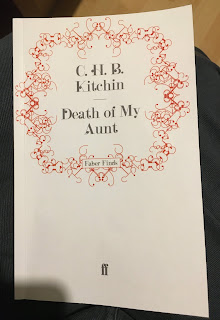Remembering crime writer H R F Keating on the 95th anniversary of his birth
The prolific crime writer, critic and expert on detective fiction, H R F Keating, was honoured on his 80th birthday by fellow members of the Detection Club with an anthology of short stories, The Verdict of Us All.The Verdict of Us All is a collection of
stories by some of the top crime novelists
H R F Keating, known as Harry to his friends and family, had been president of the prestigious Detection Club for 17 years and was regarded as a respected elder statesman of the genre, having written 65 books, the majority of them crime fiction.
The contributors to the anthology included the writers, Len Deighton, Reginald Hill, Colin Dexter, P D James, Simon Brett and Liza Cody, all leading lights of contemporary crime fiction in the early part of this century.
Henry Reymond Fitzwalter (Harry) Keating had been born in the early part of the last century, on Halloween, (31 October) 1926, 95 years ago today, in St Leonards-on-Sea, Sussex. He was to become legendary for writing a series of novels featuring Inspector Ghote of the Bombay CID, despite never having set foot in India when he wrote many of them.
He worked as a journalist for the Daily Telegraph and was also crime books reviewer for The Times for 15 years. His first novel, Death and the Visiting Firemen, was published in 1959 and his first Inspector Ghote mystery, The Perfect Murder, was published in 1966.
Keating was a chairman of the Crime Writers’ Association and the Society of Authors and a fellow of the Royal Society of Literature. In 1995, he was awarded the Cartier Diamond Dagger by the CWA for outstanding services to crime literature.
He wrote a biography of Agatha Christie - Agatha Christie: First Lady of Crime and a book about Sherlock Holmes - Sherlock Holmes, the Man and his World.Keating was much respected
by his fellow writers
His 1986 book, Writing Crime Fiction, was based on his analysis of the development of the genre from the 1920s to the 1980s.
Keating married the actor Sheila Mitchell and they had four children and nine grandchildren. It was Sheila who chose one of Keating’s many short stories to round off the anthology, The Verdict of Us All.
She introduces the short story, Arkady Nicolaivic, which was written by Keating in 1992. She writes: ‘It gives us a glimpse of a very young Ghote, possibly at his most naïve and, as usual, beset by problems. To some who know him, Harry has an outgoing and relaxed personality, but to those who know him best there are many parallels between the writer and his character…’
To any Inspector Ghote fan who has not yet read this short story, the charming glimpse into the past of the detective will be a real treat. It tells the story of a young Ghote being sent on an official trip to Russia and, after falling for a pretty young Russian girl, delivering himself into the hands of the KGB.
The Verdict of Us All was published in 2006 by Allison Busby.
H R F Keating's books are available from or





